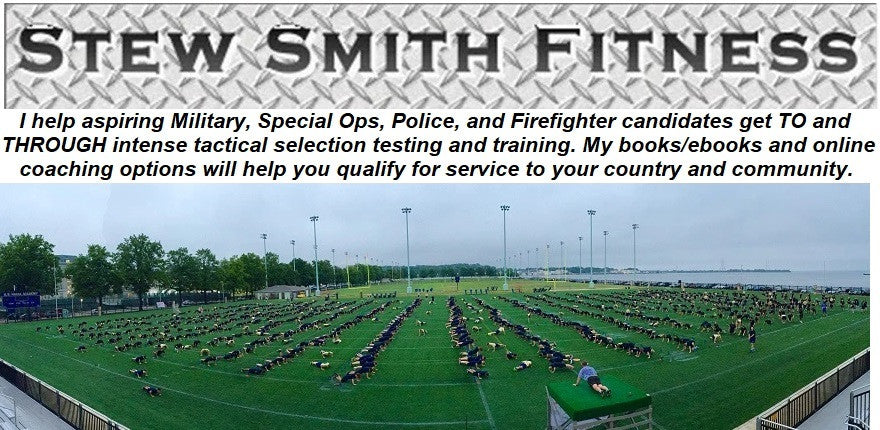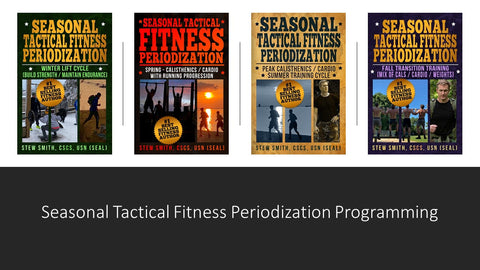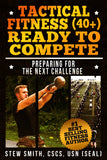CSS Help: The Sequence
"Pull - Breathe - Kick - Glide
(1 Mississippi - 2 Mississippi - Pull) Repeat..."

If you have ever watched my Instagram or Youtube CSS Critique videos and now TikTok CSS Videos, you may have heard me use this sequence of events that must occur in order to have an effective and efficient combat swimmer stroke.
This quote is nothing fancy, just what I say everyday when I teach someone new the Combat Swimmer Stroke. Once you master this sequence, we can then focus on building and maintaining the momentum from kicking off the wall using another common phrase:
"Big kick off the wall, double arm pull, kick, tight arm recovery, first pull of the stroke."
NOTE - Some recruiting districts do not allow the double arm pull (breast stroke pullout) and that is fine - just skip that step when you kick off the wall.
I have used these quotes for over 25 years creating some of the faster CSS swim times out of non-swimming athletes ever to attend programs that require this skill. When you master all of the above, now you need to focus on getting into swimming shape, because most non-swimmers are not in swimming shape.
Let's break it down:
PULL - Turn your head to breathe during the top arm pull which is nothing more than a "freestyle catch and turn to inhale" just like in the breathing stroke of freestyle of crawl stroke swim. Learning to grab water and pull / push it behind you will build the type of horizontal power you need.


The head should be turned just before the completion of the stroke and the inhale starts with the bottom arm pull.
BREATHE during bottom arm pull - With the head turned from the top arm pull, now pull the bottom arm using more of a breast stroke pull (breast stroke scull - video). Some people like a bigger bottom arm pull to help with lifting them to the point they can inhale, but do NOT breathe like you are doing the breast stroke. This should look like a freestyle breath with half of your face still in the water.

KICK - With a big scissor kick or breast stroke kick, open and close the legs quickly to produce as much forward power to move you through the water. One key element to the kick is having a streamlined arm recovery getting back into the glide position. Keep your hands / arms tight to your body otherwise it is like putting on the brakes in the water killing your momentum every stroke. Typical kicks will produce about 2-3 seconds of effortless glide IF you can be streamlined in the glide position.

GLIDE - Most people under glide (less than 2 Mississippi's) wasting their momentum, but some people over glide (more than 3-4 Mississippi's) losing all of their momentum. Being streamlined is key not only getting TO the glide position, but staying in the glide position for 2-3 seconds especially if you are trying to maintain a yard per second pace by simply gliding. This is where your efficiency is counted. No glide = no efficiency. NOTE - it is up to you if you want to glide on your side, at a 45 degree angle, or on your stomach. Whatever works best for you.

TIPS: Glide position - Biceps should be touching your ears, one hand on top of the other, keep your head down, feet stay still and together.
See video of this non-swimming athlete crush the CSS technique and put this sequence in motion and repeat.
Here is another clever training tip:
Every swim session you do needs to start off with a 500yd swim warmup. When you can call 500yds or 500m a warmup, you are starting to get into better swimming shape. This will also help you mentally prior to any PST as you can honestly say, "first event is a warmup".
To get in shape for this 500yd swim without fins, you need to get in the pool 4-6 days a week and swim 1000-1500m minimum. My killer 50-50 workout does just that for you but you have to be consistent with it. Most people will go from 10+ minutes to 8 minutes in about a month with that workout.
See more about this break through workout - 50-50 - FREE!
When you are able to crush the 500yd swim to advanced levels (8:00 - 8:20), then you can turn the 500yd swim into a 10 minute tread with no hands to prepare for general water confidence that I promise will require treading with no hands for long periods of time. You have to get in shape for this too as it is literally vertical swimming. DO NOT BLOW THIS OFF! Many Spec Ops / Spec War dreams have ending during a treading water drill. Treading Skills
It is important to also start swimming with SCUBA fins (Jet Fins / Rocket Fins) once you master the without fin swim portions. Once you are in training, most of your swims will be with fins. We tend to swim longer distances (2000-4000yds) with fins on leg days after lifting.
If you are one of those active duty, recruits, or candidates preparing for a fitness test or selection programs whose desire is to really make this work for you, check out the ONE STOP SHOP Combat Swimming Stroke Article and Video Archive.
After You Pass the PST - Assess Yourself for
Any Other Weaknesses (Assessment Tool)
Your Weaknesses Will Be Exposed IF YOU Ignore Them - During the Recruiting Process and certainly through Prep and BUD/S itself.
Not being prepared for your "dream job" is on you. It takes time to get to the level of being able to crush the PST and then the follow on logs, boats, and weekly 4 mile runs, and 2 ocean mile swims with fins. Just because you can crush a PST, does not mean anything for the follow on events at BUDS.
Show up on Day 1 of your job interview (PST Test Day) well prepared and be in the passing group at least. Showing up and failing is the wrong attitude and a horrible first impression to your future employer. YES - take it that seriously IF you really want this. After all, it only takes Four Steps to Get Prepared for Special Ops Selection.
There is More To StewSmithFitness.com than You May Know
(In fact, there are more than 40 books, 1000+ articles, online coaching - and more)
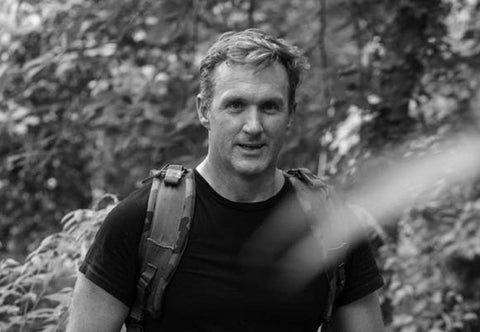
Who is Stew Smith CSCS? Coach, Trainer, Writer, Podcaster: I'm the former Navy SEAL that tactical candidates go to for books, ebooks and online coaching to prepare themselves to get to and through intense tactical assessment and selection programs and qualify for service in their chosen tactical profession. See More at StewSmithFitness.com
Where to Find More Information About Optimal Performance Training Programs
When you start training again, consider the seasonal tactical fitness model. I call it A WAY to train and obviously not the only way to train. But it offers the opportunity to never neglect your weaknesses, helps with flexibility and mobility, but will also put you at a level of physical abilities where you are happy with your overall ability to do just about anything. We have a system where the seasons dictate our training. When it is nicer outside, we tend to run and do more calisthenics. When it is colder and not so nice, we lift more, run less, and still maintain our outdoor activities with shorter runs and rucks. Check it out: Seasonal Tactical Fitness Periodization System.
These Seasonal Tactical Fitness BLOCK Periodization programs will walk you through 4 x 4 weeks cycles with 16 weeks of each season in two programs. (32 total weeks)

Increase Strength & Crush the PST / PAST
3 Weeks Strength - 1 Week PT / Cardio Focus
(16 weeks)
These programs will walk you through 4 cycles with 12 weeks of each season in two programs.
The Specific Military / Special Ops Physical Fitness Workouts

Navy SEAL Workout Phase 1
Navy SEAL Workout Phase 2 - 3
Navy SEAL Workout Phase 4 Grinder PT
Navy SWCC Workout
Army / Air Force Advanced Fitness / Special Ops
Army PFT Workout (Prep For Rucking, OPAT, ACFT)
Army Special Forces / Ranger Workout
Army Air Assault School Workout
Army Airborne Workout
Air Force Special Warfare IFT / OFT / Selection Prep



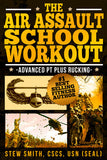
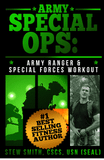


Advanced Running Program - Special Ops Supplement Plan
USMC RECON / MarSOC Workout
USMC OCS / TBS Workout
USMC IST and PFT
The Combat Conditioning Workout
Air Force PJ / CCT Workout Battlefield Airman Prep Course
The UBRR Upper Body Round Robin Workout / Spec Ops version
The Coast Guard Rescue Swimmer / Navy SAR Workout
The Service Academy Workout (West Point, Navy, Air Force Academy)
The Navy, Air Force, Marine Corp Boot Camp Workout
The Law Enforcement Physical Fitness Workouts
The FBI Academy Workout | FBI Workout Vol 2
The DEA Workout
The FLETC Workout - Ace the PEB
The PFT Bible: Pushups, Sit-ups, 1.5 Mile Run
The Fire Fighter Workout - Ace the CPAT
Beginner / Intermediate / Advanced Fitness Guides
The Beginner / Intermediate Guide to Fitness
Reclaim Your Life Erin O'Neill Story (beginner / intermediate)
Veterans Fitness Baby Boomer and a Flat Stomach
Circuit Training 101 Beginner / Intermediate Guide to the Gym
The Busy Executive Workout Routine
The Obstacle Course Workout Prep for Races or Mil, LE, FF
TRX / Military Style Workouts Adding TRX to Military Prep Workouts
Tactical Fitness Over 40 Series
Tactical Fitness (40+) Phase 1, Phase 2, Phase 3, Phase 4
Online Coaching Options
Online PT CLUB - Weekly Workouts created personally for you.
New Member's Only Content / Services Program!
If you want access to years worth of workouts, many of the top eBOOKs, favorite workouts of the week, free fitness APP, closed Facebook Group, video / picture library of exercises, and more access to LIVE Q/A sessions check out the Stew Smith Fitness Members Section.
The dashboard below has the links to all the information, archives, videos, and links to workouts, podcasts, live Q and A lessons.
Consider this! - A Membership Program and Gain Access to Exclusive Content
(click for Fitness Club Dashboard - members only)
Questions? Just email - Stew@StewSmith.com
At StewSmith.com - List of Products and Services
- FREE Articles
- Podcasts and Swimming Videos (Youtube, TikTok, Instagram)
- eBooks
- Books and eBooks in PRINT
- Stew Smith Fitness Club membership site
- Online Coaching
Stew Smith Fitness
Find more about our programs on our social media:
Instagram TikTok Youtube
Stew Smith is a former Navy SEAL and fitness author certified as a Strength and Conditioning Specialist (CSCS) with the National Strength and Conditioning Association. Visit his Fitness store if you're looking to start a workout program to get you TO and THROUGH any tactical fitness training program OR create a healthy lifestyle. Send your fitness questions to stew@stewsmith.com.
